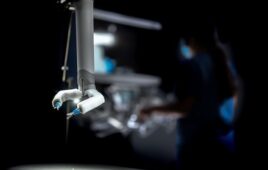The numerous barriers to deploying high-speed Ethernet-enabled instrumentation in hazardous process automation facilities are now resolved with the introduction of Ethernet-APL technology. Ethernet-APL is the new two-wire, intrinsically safe physical layer suitable for use in demanding process automation applications. Ethernet-APL’s benefits include dramatically improved communication speed, hazardous area reach, power to field instrumentation, and long cable runs. Leading standards development organizations FieldComm Group, ODVA, OPC Foundation, and PROFIBUS & PROFINET International (PI), as well as 12 major industrial project partners, have worked together successfully over the past three years under “The APL Project” to create this new physical layer solution for field instrumentation. With the release of the specifications, engineering guidelines, and conformance test plans by The APL Project, end users can now expect components from leading suppliers, with first products now available from select vendors.
Ethernet-APL is an extension of the specification for Single-Pair Ethernet (SPE) based on 10BASET-1L, which can support every higher-order Ethernet communication protocol. By making adjustments to the physical layer, the requirements necessary for reliable operation in process-related plants are satisfied. The principal requirements are high-speed Ethernet based communications, operation in potentially explosive areas, and an ability to install long cable lengths of up to 1,000 meters. The electrical parameters that an Ethernet-APL device must meet to ensure “intrinsically safe” ignition protection are defined in the technical specification of the IEC TS 60079-47 (2-WISE or 2-Wire Intrinsically Safe Ethernet).
The APL Project to bring Ethernet to the field has been underway for several years, and it is with much excitement and anticipation that this initial technology launch is announced. “We are very pleased to release the carefully crafted technology specifications and engineering guidelines to enable Ethernet-APL technology to start to transform the field of process plants,” commented Dr. Jörg Hähniche, Chair of the APL Steering Committee. “The high level of cooperation across multiple standards development and vendor organizations within the APL Project has resulted in one future oriented Ethernet physical layer for process automation. This technology launch is a key progress marker, and the development journey will continue now with products in the pipeline from significant industry partners.”
The APL Project has defined port profiles to create the Ethernet-APL concept for multiple power levels with and without explosion hazardous area protection. Ethernet-APL port profiles, including electrical power classes, shield connection options, and segment lengths, have been finalized. Markings on devices and instrumentation will indicate power level and function as sourcing or sinking. This will provide a simple framework for interoperability from engineering to operation and maintenance. Engineering guidelines and best practices for planning and installation are also now complete and available in an engineering directive document that will support users when designing and commissioning networks utilizing Ethernet-APL. This facilitates an easy transfer of knowledge for a smooth adoption of Ethernet-APL. Standard Ethernet diagnostic tools will assist new or seasoned instrument techs and engineers in their daily work, providing for a shallow learning curve.
As a single physical layer, Ethernet-APL will be able to support EtherNet/IP, HART-IP, OPC UA, PROFINET, or any other higher-level network protocol. Activities are underway to finalize conformance testing at the leading standards development organizations that are a part of the APL Project. The test specifications now published will assure the quality of products and verify that a product complies with the parameters defined in the APL port profiles specification. The APL Project team has also cooperated with semiconductor manufacturers who will offer 10BASE-T1L Phys for Ethernet-APL on the market. Additionally, the 12 APL Project industry partners are finalizing development of products that will be available in the marketplace soon. The multivendor demonstration in Karlsruhe, Germany – displayed digitally during ACHEMA Pulse showing participation across different product vendors and networks – highlights the multiple options and interoperability that Ethernet-APL will offer end users.
With the launch of Ethernet-APL, users can now anticipate a single Ethernet physical layer that can enable long cable reach, intrinsic safety, and application-level protocol support for maximum productivity and output. Products will be available in the market soon with conformance testing certification. Users can learn more about Ethernet-APL by visiting ethernet-apl.org and downloading the “Ethernet to the Field” white paper.
ODVA
www.odva.org
Filed Under: IoT • IIoT • Internet of things • Industry 4.0, NEWS • PROFILES • EDITORIALS, Ethernet — cables • hubs • switches, CONNECTIVITY • fieldbuses • networks



